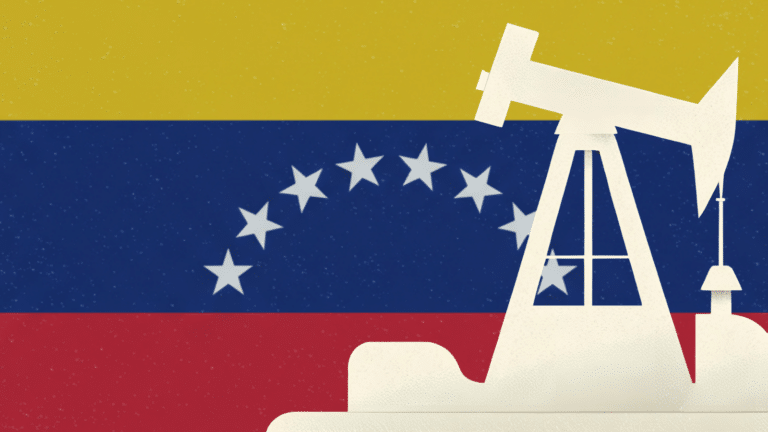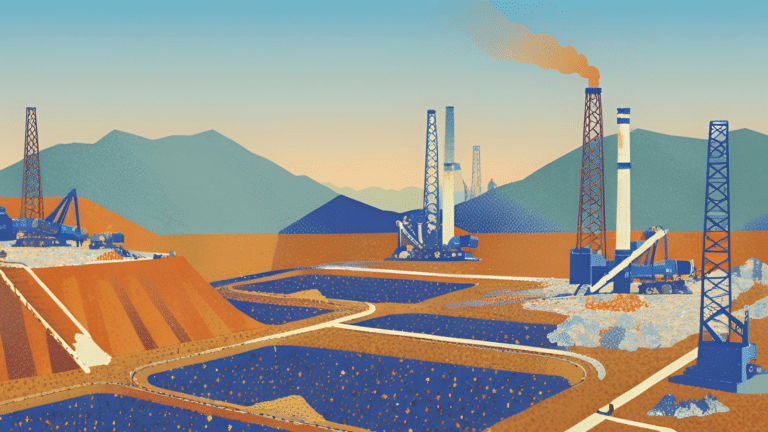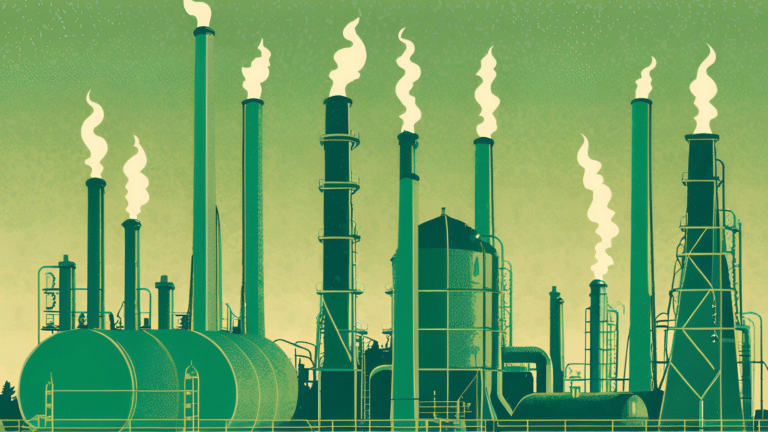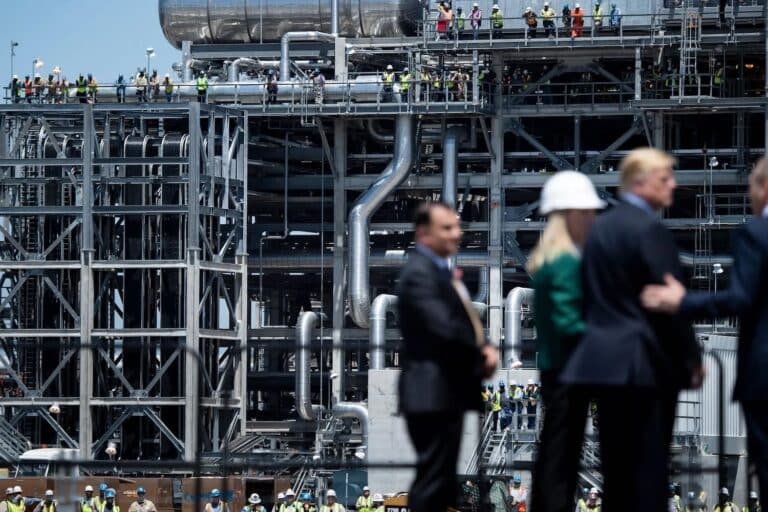China Halts U.S. LNG Imports Amid Tariff War
China has ceased importing liquefied natural gas from the United States since early February, as the ongoing tariff war impacts energy trade.
Current Access Level “I” – ID Only: CUID holders, alumni, and approved guests only
Insights from the Center on Global Energy Policy
Large scale industrial policy is once again at the top of the agenda for policy-makers in the world’s three largest economies: the United States, China, and the European Union (EU). Central to this current wave are renewable and low-carbon energy technologies and associated supply chains. The implications of this era of industrial policy will be deep and more disruptive, especially in four interrelated areas: geopolitics, energy transition, trade, and environmental justice. This post argues that the global economy is in the midst of an industrial policy renaissance and discusses how that’s upending global supply chains, reshaping industries from semiconductors to solar panels, and adding yet another layer of churn to an already turbulent global geopolitical and trade outlook.
Industrial policy is generally defined as government policy intervention in the private sector to bolster domestic strategic industries through a mix of subsidies, trade promotion, protectionism, and regulatory intervention.[1] Industrial policy is not new, especially in the EU and China. Even the United States has had experience with it, particularly in the Cold War aerospace-defense complex and in sporadic and targeted attempts by various presidential administrations to lean into public-private partnerships and subsidize sectors from technology to export-oriented manufacturing.
The current industrial policy wave began in China in 2015 with the Made in China 2025 (MIC 2025) plan,[2] which sought to bolster ten strategic sectors, including alternative vehicles and renewable energy. While a range wide of policy measures make up the MIC 2025 plan, the two broad categories are centered around heavy direct government investment and new guidelines to limit foreign competition.[3] The next chapter in the industrial policy renaissance took place in the EU in 2019 with the implementation of the 1 trillion-euro EU Green Deal Investment Plan.[4] The onset of the COVID-19 pandemic, immediately following the Green Deal announcement, led to another massive wave of EU public sector investment targeting key industries in the form of the NextGenerationEU (NGEU) Recovery and Resilience Facility (RRF).[5]
China’s MIC 2025 plan has strong focus on advanced manufacturing, clean energy, and the digital economy, motivated heavily by efforts to close a gap in those areas with its major geopolitical and economic competitors. The EU Green Deal and NGEU focus on clean energy as well, as a path to achieving EU-wide greenhouse gas reduction targets in the “Fit for 55” plan, supporting workers transitioning from legacy fossil fuel extraction and basic manufacturing industries and building global champions in emerging decarbonization technologies.[6]
The industrial policy renaissance reached the United States with the election of President Biden in November 2020. Like the EU, the Biden administration industrial policy push in 2021 and 2022 was heavily shaped by response to the COVID-19 pandemic economic shock and the energy transition. It was also motivated by a sense of threat regarding competitiveness and vulnerability toward China, a perception that was deeply elevated during the prior Trump administration, and was in many ways the mirror image of the geoeconomic insecurity embedded in MIC 2025 – particularly with respect to the 2022 CHIPS Act.[7]
The central tenet of Biden administration’s industrial policy is the 2022 Inflation Reduction Act (IRA). The IRA provides $394 billion in tax breaks and spending for the clean energy sector (broadly defined), out of a total $500 billion package.[8] While the massive bill was welcomed in the EU from a climate action perspective, some of its provisions around domestic content obligations and Buy America have, ironically, generated unhappiness from European leaders.[9] European leaders are calling for removing the protectionist provisions of the IRA while simultaneously rallying the EU to respond with an expansion of its mega investment of public sector euros into the clean energy sector (Figure 1).
Seeing the IRA as a call to expand its Green Deal to IRA-level ambitions, Europeans have expeditiously started responding with discussions and reforms. In recent weeks, European leaders have signaled that they intend to tap into the fundamental aspects of their economy – openness, citizen welfare focus, and EU single market – to rally confidence and competition for the right reforms, increase US-EU dialogue, and maintain an open approach to global trade.[10] The EU is now also responding directly to IRA through proposals to expand the use of tax credit type provisions embedded in the IRA, a major policy shift in the EU that had previously been reluctant to provide such incentives.[11]
As tensions over green energy industrial policy rise, it is noteworthy that US-EU-China spats over industrial policy are imbued with quasi-military lingo that goes beyond “competition” to “winning the commanding heights” to “avoiding chokepoints” and “whole of government mobilization” to achieve economic goals positioned with national power. The important defense applications of dual-use technologies like computer chips and strategic materials like rare earth elements further elevates the national security dimensions of industrial policy. But beyond these factors and, most significantly, the current round of industrial policy has a strong dimension of zero-sum geopolitics.[12]
Zero-sum means that there will be winners and losers in the competition to dominate the production of electric vehicles batteries or electrolyzers – and that the competition to win in these sectors is far too important to be left to the whims of the market. This posture creates unease among some climate activists who worry that the massive scale of the decarbonization challenge requires close coordination among major industrial powers and integrated, efficient global supply chains, market access, and knowledge transfer.[13]
Foreign policy practitioners are worried about industrial policy tensions introducing friction into the Trans-Atlantic US-EU partnership when the dual challenges of the climate crisis and Russia-Ukraine war require unity.[14] The US-China dynamic is already fraught, and there are real concerns that a new cycle of escalation over protectionist or nationalist industrial policy trade and investment restrictions will undermine joint climate action.[15] The zero-sum framing of the energy transition may also introduce geopolitical risk in the form of strategic competition between the US and China in critical minerals-rich third-party countries in Latin America, Africa, and Asia.[16]
From a trade perspective, the world has been rapidly moving away from a decades-long wave of globalization, which arguably crested when the US abandoned the Trans-Pacific Partnership in 2017. While there are a few bright spots of bilateral or regional free trade momentum, the elevation of industrial policy nationalism in the three largest global economies hardly bodes well for further liberalization of global trade. An escalatory cycle of industrial policy nationalism in clean energy sectors may also distort investment – with public capital subsidizing marginal projects and companies eroding market discipline. Renewable energy and decarbonization focused companies may “succeed” based on the ability to capture government rents versus innovation or winning customers in a global marketplace crucible. Of course, there are proposed safeguards against much of this, but such safeguards may erode in a tit-for-tat industrial policy push with hundreds of billions of dollars/RMB/euros to deploy.[17]
Lastly, the industrial policy wave will have significant implications for environmental justice, particularly with respect to the just transition. The idea that the transition to a decarbonized economy should not disproportionately harm particular groups is embedded directly in the EU Green Deal and IRA.[18] Do these just transition considerations manifest in China? Outside observers sometimes suggest that Beijing can impose its industrial policy vision without regard for local communities or domestic political considerations like elections. At the same time, issues like overcapacity, labor mobility, and managing legacy pollution in coal regions will be vital for China’s shift to the green manufacturing goals of MIC 2025 to succeed.[19] I plan to discuss environmental justice in more detail in a forthcoming post.
The author thanks Bhavya Jha for her contributions to this article.
[1] https://www.cfr.org/backgrounder/industrial-policy-making-comeback
[2] https://cset.georgetown.edu/wp-content/uploads/t0432_made_in_china_2025_EN.pdf; https://www.cfr.org/backgrounder/made-china-2025-threat-global-trade#chapter-title-0-3
[3] https://www.uschamber.com/assets/archived/images/final_made_in_china_2025_report_full.pdf; https://www.ft.com/content/f7df0f64-25b5-4526-82fa-ca1b554b541b
[4] https://www.weforum.org/agenda/2021/07/what-you-need-to-know-about-the-european-green-deal-and-what-comes-next/
[5] https://commission.europa.eu/strategy-and-policy/recovery-plan-europe_en
[6] https://ec.europa.eu/commission/presscorner/detail/en/ip_20_17
[7] https://www.whitehouse.gov/briefing-room/statements-releases/2022/08/09/fact-sheet-chips-and-science-act-will-lower-costs-create-jobs-strengthen-supply-chains-and-counter-china/
[8] https://www.mckinsey.com/industries/public-and-social-sector/our-insights/the-inflation-reduction-act-heres-whats-in-it
[9] https://www.cnbc.com/2023/01/19/still-discriminatory-measures-in-us-inflation-reduction-act-eus-valdis-dombrovskis-.html
[10] https://www.ft.com/content/0bf3708d-20fe-4700-8702-bd0f6ef5591e?accessToken=zwAAAYYE7dg7kc8L83CNIP5HANOHAr0PbvVZHg.MEUCIQDSDlxWRX58t8JSDpxpnO4QWreRNBKjm4-fxfjTjE7mzAIgOa6KBiFTX61-URd_f9Jky1LSVtCI6FbJldndxEdHZFU&sharetype=gift&token=c59de1cd-a8b5-43a1-a299-9e71b73753ce
[11] https://www.carbonbrief.org/daily-brief/eu-plans-to-relax-curbs-on-tax-credits-in-response-to-toxic-us-subsidies/
[12] https://medium.com/the-bridgespace/decoding-the-zero-sum-game-in-international-relations-2aafae1f293c
[13] https://www.nytimes.com/2021/05/11/business/economy/clean-energy-biden.html
[14] https://apnews.com/article/russia-ukraine-biden-washington-european-union-climate-and-environment-3eddaa74ffbcd4b572dc87fbfaf3072d
[15] https://www.washingtonpost.com/business/2022/11/17/china-trade-investors-markets/
[16] https://www.csis.org/analysis/china-minerals-and-power-competition
[17] https://www.govexec.com/oversight/2022/10/best-way-protect-infrastructure-spending-waste-and-fraud-set-oversight-bodyright-now/378087/
[18] https://commission.europa.eu/strategy-and-policy/priorities-2019-2024/european-green-deal/finance-and-green-deal/just-transition-mechanism_en; https://www.whitehouse.gov/briefing-room/statements-releases/2022/08/17/fact-sheet-inflation-reduction-act-advances-environmental-justice/
[19] https://www.worldbank.org/en/news/press-release/2022/10/12/china-s-transition-to-a-low-carbon-economy-and-climate-resilience-needs-shifts-in-resources-and-technologies; https://static.agora-energiewende.de/fileadmin/Projekte/2022/Publications_other/A-EW_262_EFC_China_WEB.pdf
This Energy Explained post represents the research and views of the author. It does not necessarily represent the views of the Center on Global Energy Policy. The piece...

This Energy Explained post represents the research and views of the author. It does not necessarily represent the views of the Center on Global Energy Policy. The piece...

This Energy Explained post represents the research and views of the author. It does not necessarily represent the views of the Center on Global Energy Policy. The piece...

This Energy Explained post represents the research and views of the author. It does not necessarily represent the views of the Center on Global Energy Policy. The piece...

Can U.S. gas exports throw a lifeline to Europe without raising prices at home?

The incoming Trump administration should embrace a diverse energy mix, including renewables, for the sake of economic and national security.

